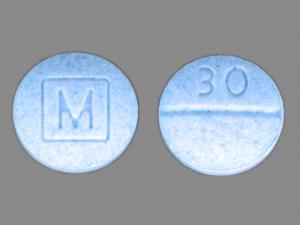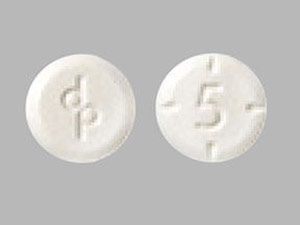Description
How Oxycodone Works, Its Effects, and Mechanism of Action:
Below, we will explain how oxycodone works in detail and very educational way.
Oxycodone acts on opioid receptors in the brain and spinal cord, effectively reducing pain signals with consistent precision.
At the same time, it binds to mu-opioid receptors, which help regulate the body’s interpretation of pain.
As a result, this action allows people to experience noticeable relief from moderate to severe discomfort.
Doctors often prescribe this medication when other treatments fail to provide sufficient pain relief.

After ingestion, oxycodone enters the bloodstream and quickly reaches the central nervous system to begin its action.
As a result, patients begin to experience a decrease in pain intensity within a short time.
Additionally, the medication works by altering emotional responses to discomfort, helping patients feel more mentally relaxed.
Thanks to these effects, many people regain their physical abilities and enjoy a better daily life.
However, healthcare professionals closely monitor its use to prevent abuse and possible addiction.
Ultimately, understanding how oxycodone works allows patients to make safer and smarter pain management decisions.
Many patients now turn to oxycodone when other pain relievers fail to provide effective or lasting relief.
Consequently, doctors prescribe oxycodone because its effect on pain is different from that of common over-the-counter medications.
It’s worth noting that oxycodone acts on the nervous system and alters the way pain signals reach the brain.
For this reason, people suffering from surgical injuries or chronic pain rely on it for fast and lasting relief.
At the same time, healthcare professionals carefully monitor patients due to oxycodone’s known addiction potential.
How Oxycodone works (Interacts) with the Central Nervous System:
First, oxycodone binds to specific opioid receptors located in the brain, spinal cord, and surrounding nervous tissue.
As a result, this prevents pain signals from traveling through the nerves and reaching the brain for processing.
Meanwhile, these receptors alter their response to stimuli, reducing the sensation of pain throughout the body.
Thus, even if there is damage, the brain no longer perceives the full intensity of physical discomfort.
As a result, patients experience greater comfort without the need for constant pain-related medical interventions.
Furthermore, oxycodone triggers the release of dopamine.
In addition to pain relief, oxycodone also stimulates the release of dopamine, which creates feelings of calm and mild euphoria.
Due to this effect, many patients report emotional relief in addition to physical comfort after taking oxycodone.
As a result, the drug is considered beneficial both psychologically and physiologically in cases of severe pain.
However, this feeling of euphoria contributes to misuse when the drug is taken without medical authorization.
Doctors, remain cautious, prescribing low doses and limiting long-term use whenever possible.
Role of Oxycodone Versus Non-Opioid Pain Relievers(How oxycodone works):
Unlike ibuprofen or acetaminophen, oxycodone does not reduce inflammation but directly disrupts the brain’s pain perception process.
Therefore, it provides more intense relief when other medications fail to control persistent or severe pain.
In contrast, over-the-counter medications treat superficial symptoms without directly affecting central nervous system activity, like oxycodone.
Therefore, when milder options are ineffective, physicians turn to oxycodone to ensure a patient’s well-being and improve their quality of life.
It is important to note that oxycodone’s mechanism of action involves the entire nervous system rather than treating pain locally or temporarily.
Duration and Timing of Oxycodone’s Pain-Relieving Effects (how oxycodone works)
Immediately after ingestion, oxycodone enters the bloodstream and reaches the brain to begin blocking pain pathways.
Patients typically experience relief within 30 minutes when using immediate-release tablets for fast results.
Meanwhile, extended-release versions offer longer-lasting effects by maintaining stable drug levels throughout the day.
This helps control pain without the need for constant dose repetition or disruptions to sleep or daily routines.
To maintain effectiveness, patients follow the precise dosage instructions prescribed by their healthcare professionals.
Common Side Effects of Oxycodone:
While it provides relief, oxycodone also affects other systems, often causing drowsiness, dizziness, dry mouth, or constipation.
It also slows digestion, which can lead to bothersome and persistent gastrointestinal problems if left untreated.
For this reason, doctors recommend good hydration, a high-fiber diet, or laxatives during prolonged oxycodone use.
Respiratory function can also be impaired, especially when oxycodone is combined with sedatives or alcohol.
Because of these risks, patients are given strict instructions on which substances to avoid during treatment.
Over time, tolerance and dependence develop.
Over time, the body adapts to oxycodone, requiring higher doses to experience the same level of relief.
This phenomenon, known as tolerance, causes patients to consume more, increasing the risk of accidental overdose.
Over time, the body develops a dependence on oxycodone, requiring it to function normally and prevent withdrawal symptoms.
Therefore, doctors recommend short-term use and frequently reevaluate treatment options to minimize these long-term effects.
Ultimately, physical dependence makes it difficult to stop without a supervised tapering plan.
Withdrawal symptoms appear after abrupt discontinuation.
If stopped abruptly, oxycodone causes withdrawal symptoms such as agitation, anxiety, chills, and muscle pain.
Because the brain no longer receives opioids, it overreacts, causing discomfort and strong cravings.
Physicians, reduce doses to ease the transition and protect the patient’s well-being. How oxycodone works
In some cases, medications such as buprenorphine are prescribed to facilitate the withdrawal process.
Therefore, professional support improves recovery outcomes and prevents relapse into opioid use.
Safe use practices minimize health risks.
To ensure safety, patients only take oxycodone as directed by their physician.
They also avoid doubling the dose or taking extra pills when the pain is more severe than usual. How oxycodone works
Additionally, oxycodone is stored in sealed containers to prevent misuse or accidental ingestion by children or pets.
Unused tablets are returned to collection programs instead of being improperly flushed down the toilet or thrown in the trash.
By following these guidelines, people can use oxycodone safely and reduce the risk of accidental injury.
Drug interactions lead to serious health complications.
When combined with alcohol, sedatives, or benzodiazepines, oxycodone significantly increases the risk of respiratory failure.
Therefore, physicians review every medication or supplement a patient is using before prescribing oxycodone.
If there is a possibility of an interaction, physicians adjust the treatment plan or suggest a safer alternative.
Therefore, open communication between patients and healthcare professionals is essential to prevent potentially fatal drug interactions.
Furthermore, patients read all medication labels to avoid any unintentional combinations during treatment.
Continuous monitoring ensures effective and safe treatment.
Due to the potency of oxycodone, physicians schedule frequent checkups to assess the patient’s physical and emotional response.
If side effects develop or pain does not improve, the treatment plan is updated immediately. How oxycodone works
Continuous communication allows for adjustments to be made before problems become dangerous or insurmountable.
Patients are encouraged to report any unusual symptoms, mood changes, or difficulty administering medication.
This allows physicians to act quickly to maintain the safety and effectiveness of treatment.
Final Thoughts: Informed Decision-Making with Oxycodone:
When used responsibly, oxycodone provides powerful and reliable relief of moderate to severe pain.
Because it acts on the nervous system, oxycodone offers more consistent pain control than most common medications.
However, patients need education, support, and frequent monitoring to avoid misuse or unwanted harm. How oxycodone works
Ultimately, clear communication and adherence to directions help patients reap the benefits while avoiding the risks of long-term use.
With the right approach, oxycodone remains an essential tool for managing pain and improving quality of life.
Frequently asked questions about oxycodone:
What is oxycodone used for?
A strong opioid is prescribed for moderate to severe pain, but it has high addiction risks.
How does oxycodone work?
It binds to brain opioid receptors, blocking pain signals and causing euphoria.
What are the common side effects?
Drowsiness, constipation, nausea, and risk of slowed breathing or overdose.
Is oxycodone addictive?
Yes, it can cause physical dependence and addiction, even with medical use.
Can you overdose on oxycodone?
Yes, an overdose can cause fatal respiratory depression—naloxone (Narcan) can reverse it.
What precautions should be taken?
Never mix with alcohol or sedatives, avoid driving, and store it securely.
What’s the difference between OxyContin and Percocet?
OxyContin is extended-release oxycodone, while Percocet combines oxycodone with acetaminophen.
Can oxycodone be prescribed long-term?
Rarely, due to addiction risks, doctors prefer non-opioid options when possible.





Reviews
There are no reviews yet.